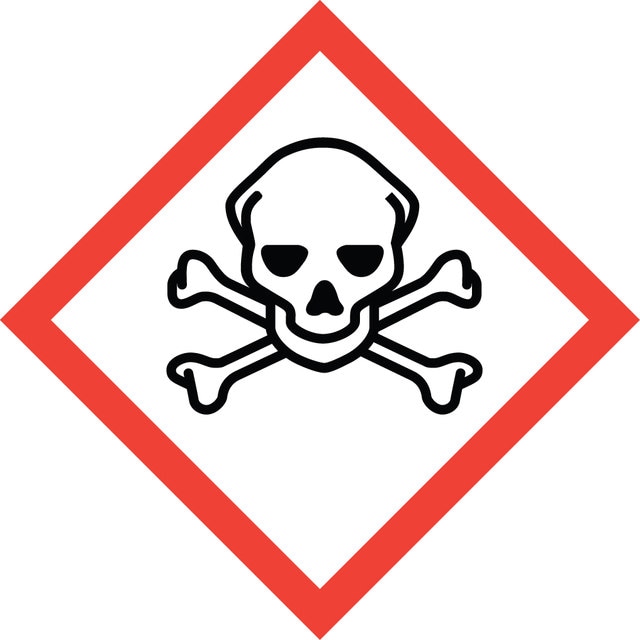34860
Methanol
≥99.9%, suitable for immunofluorescence, HPLC
Synonim(y):
Methyl alcohol
About This Item
Product Name
Methanol, suitable for HPLC, ≥99.9%
klasa czystości
HPLC grade
Poziom jakości
gęstość pary
1.11 (vs air)
ciśnienie pary
410 mmHg ( 50 °C)
97.68 mmHg ( 20 °C)
Próba
≥99.9%
Formularz
liquid
temp. samozapłonu
725 °F
granice wybuchowości
36 %
metody
HPLC: suitable
immunofluorescence: suitable
zanieczyszczenia
≤0.0005% non-volatile matter
≤1 ppb fluorescence (quinine) at 254 nm
≤1 ppb fluorescence (quinine) at 365 nm
<0.03% water (Karl Fischer)
pozostałość po odparowaniu
<0.0005%
kolor
APHA: ≤10
współczynnik refrakcji
n20/D 1.329 (lit.)
bp
64.7 °C (lit.)
mp
−98 °C (lit.)
gęstość
0.791 g/mL at 25 °C (lit.)
λ
neat
absorpcja UV
λ: 205 nm Amax: ≤1.00
λ: 210 nm Amax: ≤0.60
λ: 220 nm Amax: ≤0.30
λ: 230 nm Amax: ≤0.20
λ: 235 nm Amax: ≤0.10
λ: 240 nm Amax: ≤0.10
λ: 260 nm Amax: ≤0.04
λ: 280 nm Amax: ≤0.01
λ: 400 nm Amax: ≤0.01
Zastosowanie
PFAS testing
food and beverages
Format
neat
ciąg SMILES
CO
InChI
1S/CH4O/c1-2/h2H,1H3
Klucz InChI
OKKJLVBELUTLKV-UHFFFAOYSA-N
Szukasz podobnych produktów? Odwiedź Przewodnik dotyczący porównywania produktów
Opis ogólny
Zastosowanie
It may be used in the following studies:
- Colony forming unit-fibroblast assay of bone marrow mononuclear cells.
- As solvent for the preparation of extracts of hyphae of Aspergillus for the estimation of gliotoxin by reversed phase-HPLC.
- Immunofluorescence studies.
- To compose the eluent for the ion-pair reverse-phase HPLC isolation of nucleotides and their decomposition products.
Opakowanie
Uwaga dotycząca przygotowania
Inne uwagi
- The article number 34860-4X2.5L-R will be discontinued. Please order the single bottle 34860-2.5L-R which is physically identical with the same exact specifications.
- The article number 34860-6X1L-R will be discontinued. Please order the single bottle 34860-1L-R which is physically identical with the same exact specifications.
Hasło ostrzegawcze
Danger
Zwroty wskazujące rodzaj zagrożenia
Zwroty wskazujące środki ostrożności
Klasyfikacja zagrożeń
Acute Tox. 3 Dermal - Acute Tox. 3 Inhalation - Acute Tox. 3 Oral - Flam. Liq. 2 - STOT SE 1
Organy docelowe
Eyes,Central nervous system
Kod klasy składowania
3 - Flammable liquids
Klasa zagrożenia wodnego (WGK)
WGK 2
Temperatura zapłonu (°F)
49.5 °F - closed cup
Temperatura zapłonu (°C)
9.7 °C - closed cup
Wykazy regulacyjne
Wykazy regulacyjne dotyczą głównie produktów chemicznych. Można w nich podawać ograniczoną liczbę informacji na temat produktów niechemicznych. Brak wpisu oznacza, że żaden ze składników nie znajduje się w wykazie. Użytkownik odpowiada za zagwarantowanie bezpiecznego i zgodnego z prawem stosowania produktu.
EU REACH Annex XVII (Restriction List)
Wybierz jedną z najnowszych wersji:
Masz już ten produkt?
Dokumenty związane z niedawno zakupionymi produktami zostały zamieszczone w Bibliotece dokumentów.
Nasz zespół naukowców ma doświadczenie we wszystkich obszarach badań, w tym w naukach przyrodniczych, materiałoznawstwie, syntezie chemicznej, chromatografii, analityce i wielu innych dziedzinach.
Skontaktuj się z zespołem ds. pomocy technicznej

